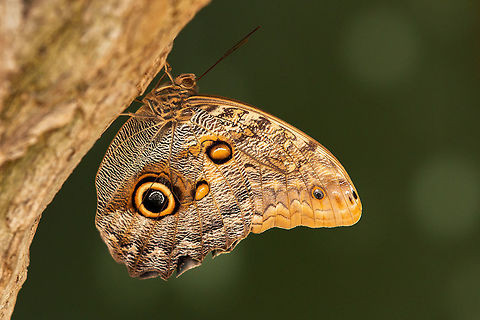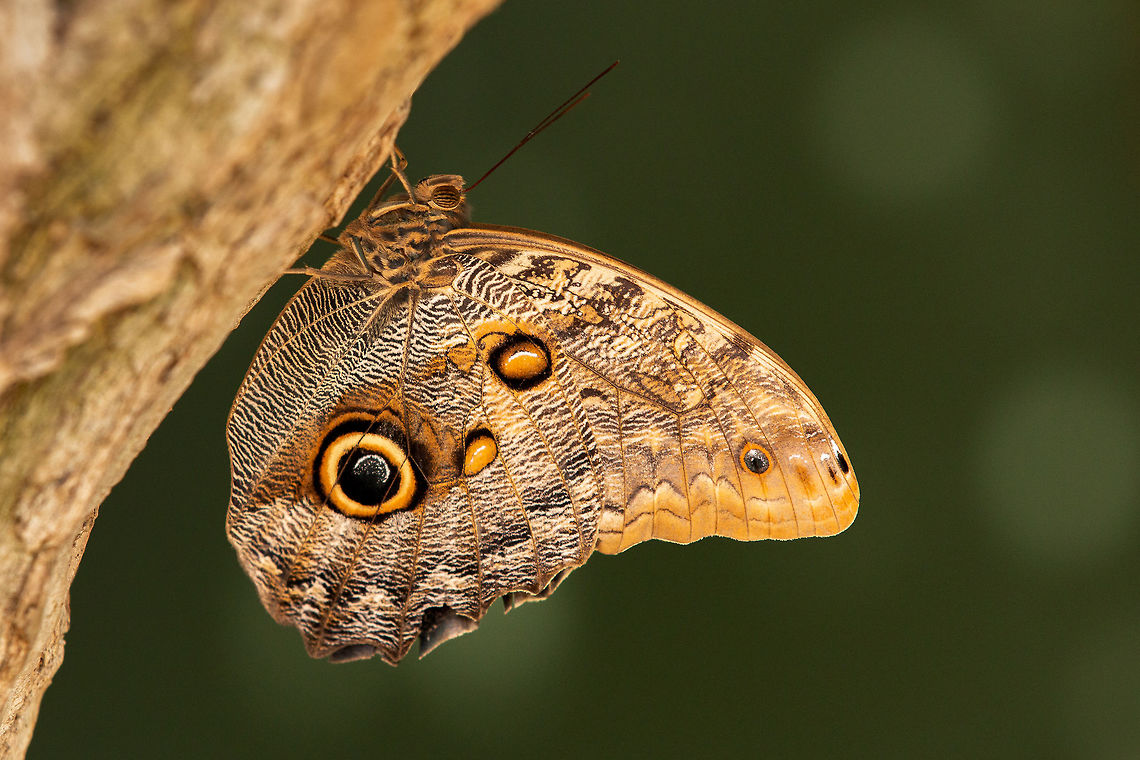
"Caligo eurilochus", the forest giant owl, is an owl butterfly ranging from Mexico, through Central America, to the Amazon River basin in South America. The type locality is Suriname. Several subspecies are recognized, but many more have been proposed.
Similar species: Moths And Butterflies
By Claire Hamilton
All rights reserved
Uploaded Aug 15, 2018. Captured Aug 15, 2018 14:29 in 6 Whiterails Rd, Wootton Bridge, Ryde PO33 4RH, UK.


comments (7)
"Brush-footed / Four-Footed Butterflies (Nymphalidae)--
JungleDragon is ending its first week of 2019 with a spotlight on members of the beautiful Nymphalidae family of butterflies. This family consists of around 6000 species in 544 genera which are mostly distributed in the tropics, however, we will be featuring just a handful of the best from our contributors from varying locations!
Nymphalids are some of the most prominent butterflies in the world, and include the likes of Monarchs, Mourning Cloaks, Viceroys, Tortoiseshells, and Admirals. They are medium to large butterflies with highly variable wing shape. They typically hold their wings flat when at rest and are well-known for their vibrant upper wing surfaces (usually in shades of white, black, orange, yellow, or brown). The lower surfaces of their wings are typically in stark contrast to the upper, however, and may even take on cryptic coloration (e.g. the appearance of dead leaves). This coloration provides camouflage for extra protection from predation.
As the common family names imply, many adult members of Nymphalidae have reduced forelegs, standing and walking entirely on the remaining four. There is a lot of debate as to why these appendages may have become vestigial, but the presence of setae (hair-like structures) in some species suggests that they may be used in signaling and communication via scent. This is often considered the unifying feature in Nymphalids, but they can additionally be characterized by the presence of three carinae (ridges) on the antennae." Posted 6 years ago, modified 6 years ago
Posted 6 years ago